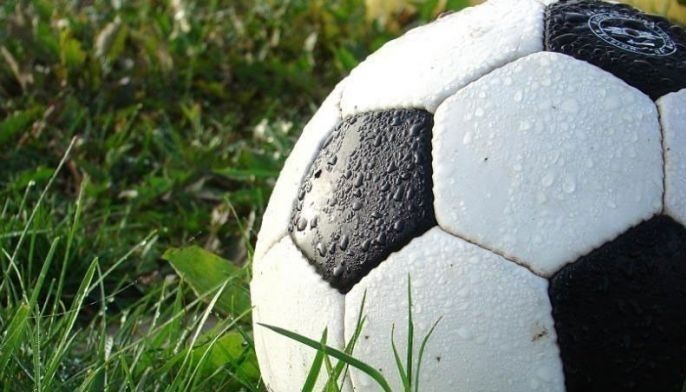Philippine grassroots football and those championship window cycles

MANILA, Philippines – If you want to know the perfect symmetry behind football, the game — like the spheroid that is kicked or headed around — works in cycles.
When Germany won the 2014 FIFA World Cup, it was the result of a decade of planning that aside from the one billion Euros spent, also included a closely coordinated youth system that saw the rise of players like Sami Khedira, Mesut Ozil and Thomas Muller to name but a very few, state-of-the-art facilities, specialized training regimens, and individualized skill-building for players all designed and engineered to fuel the Bundesliga and then the national team.
Vietnam, the current Suzuki Cup champions (they have won the biennial competition twice), are the beneficiaries of a 10-year program. They won in 2008 and returned as champions in 2018. What is unknown to most outside their native country is how they dealt with the near collapse of their professional league with many clubs going out of business. What did they do?
Like the Germans before them, they had a master plan. Vietnam partnered with English club Arsenal, French football school JMG, and financial backer Hoang Anh Gia Lai that runs the V. League to put up its celebrated Hoang Anh Gia Lai-Arsenal JMG Academy in the Central Highlands.
When Vietnam’s Under-23 side defeated their Malaysian counterparts, 3-0, in 2017 with many of them featuring in the 2018 Suzuki Cup, more than half the side had come up from this academy.
How good is this program? In the FIFA Under-20 World Cup in Korea of 2017, Vietnam was the only Southeast Asian side in the competition. They built their academy, put their coaches and best minds through training and seminars. In fact, in their coaching pyramid, there is only one foreign coach at present in their ranks. And that was their Korean coach who led them to the Suzuki Cup title as well as their previously mentioned Under-23 team. However, all the rest are local coaches.
The Philippine Football Federation has also plotted for the rise of the national team. Of course, whether that worked or not, no one knew. Nevertheless, things were put in motion in 2004 and the subsequent arrival of a storied class out of Barotac Nuevo that included Chieffy Caligdong, Ian Araneta, Roel Gener and Peter Jaugan. There were other players who would go on to star over the next decade in Aly Borromeo and Anton del Rosario, and that timely arrival and much-needed boost from the Fil-foreigner contingent of Chad Gould and Chris Greatwich. They added James and Phil Younghusband the next year, Neil Etheridge, Ray Jonsson and Rob Gier a few years later and the team made their historic 2010 Suzuki Cup run.
Now that team was primed to win the Suzuki Cup either in 2012 or 2014 but missed their chance. And now, well, the cycle is back on.
Just to give you an idea of what is being done on a grassroots level, there are eight zones identified as the producers of top football product — Metro Manila Central and South, Davao, Bukidnon, Negros, Iloilo, Cebu, Baguio and Laguna.
To give you an idea of how local football has adopted the model employed by Germany and to a certain degree, Vietnam, the products are all being pointed to for city/regional sides as well as schools and clubs.
Around the time of the project’s implementation in 2004, what was considered as Division One football in the Philippines was… the UAAP and the NCAA. Yes. Sad isn’t it?
Only with the UFL’s ascent in 2011 did they become Division One with a corresponding Division II. The collegiate leagues were unofficially, Division III.
So it is imperative that the PFL find its footing soon.
With the revived Kasibulan at the base, Philippine football began to see success in its age groups especially in the women’s level around 2014-18. You have to point out certain players and athletes such as Joyce Semacio and coach Lelet Dimzon and JR Suba on the boys’ side to name but a few who have come up from this program.
We should see further maturation of these grassroots teams by this 2020. Yet, due to the Covid-19 pandemic, there are no questions. I think funding in the last few years has not really gotten there.
I am not even sure how neatly everything is tied up the way it is supposed to be.
Under the leadership of Johnny Romualdez, the PFF put up those Centers of Excellence. I am not sure in what form they are functioning today as there have been challenges and lack of financial support.
Contingent to all this is also the development of coaches.
I recall how Manchester United put up an academy or clinic several years ago at the University of Makati and I recall some local coaches lamenting that they too teach the same thing but the believability factor wasn’t there.
That has me thinking about the success of the English and French academies in Vietnam. A way should be found for our coaches to either really learn their craft abroad or to partner with top clubs for academies. We have seen numerous stop-starts through the years, but consistency is key.
So aside from the players, the program, the local coaches are key to making this feeder system for top flight football and the national team feasible. And if we get our act going, as Azkals team manager said, the window for winning the Suzuki Cup over the next couple of years and making it to the 2026 World Cup is there. We just have to seize it.
As the saying goes, “There is not strong national team without a strong grassroots program.”
- Latest
- Trending



























